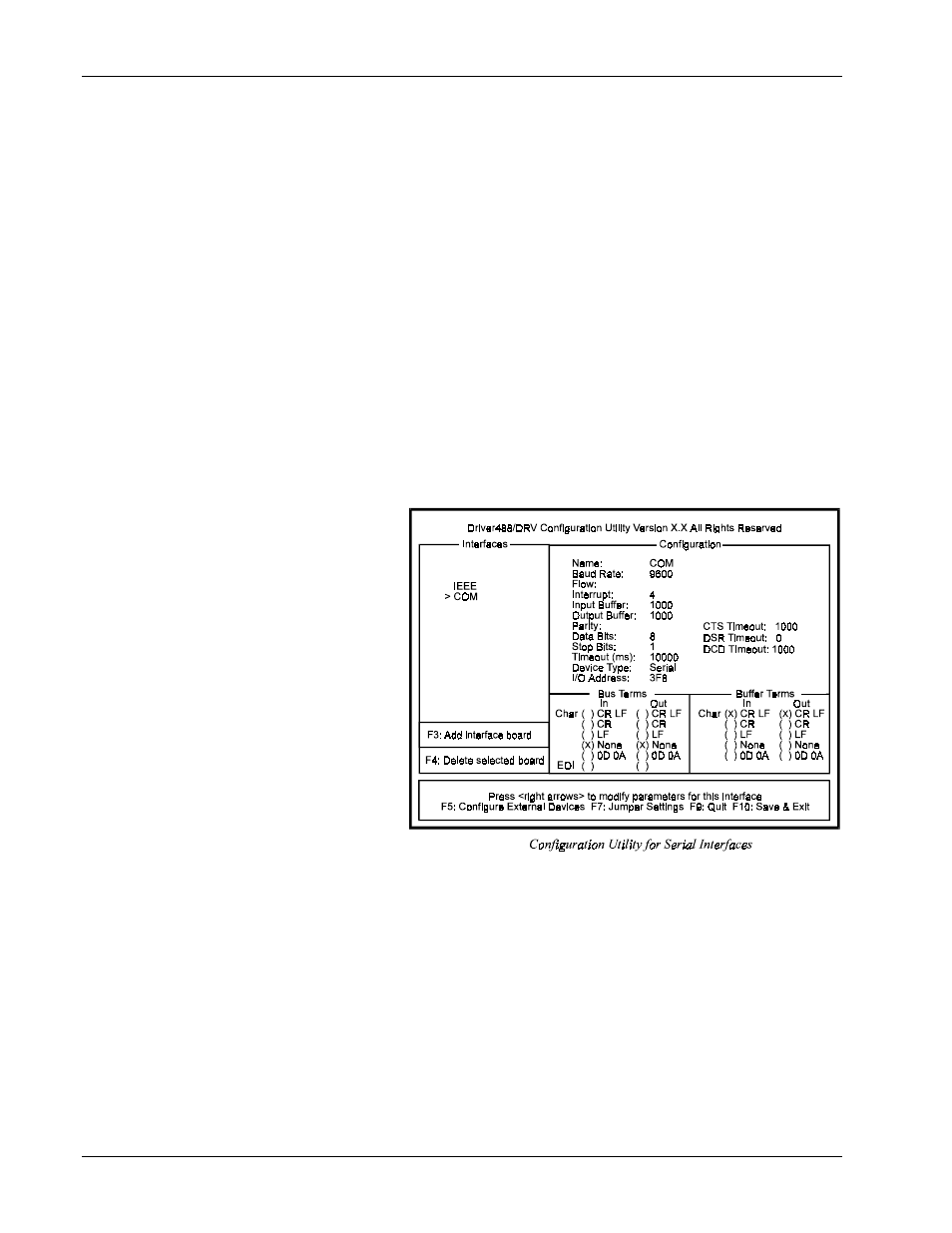Configuration of serial interfaces – Measurement Computing Personal488 rev.3.0 For DOS & Windows 3.Xi User Manual
Page 57

8B. Installation & Configuration
II. SOFTWARE GUIDES - 8. Driver488/DRV
II-42
Personal488 User’s Manual, Rev. 3.0
of pass-through printer support is that it makes communications with the NB488 about 20%
slower.
•
LPT Port Type: This field is used to specify whether the LPT port is a standard IBM
PC/XT/AT/PS/2 compatible port. Valid options are: Standard or 4-bit. The slower 4-bit option is
provided for those computers which do not fully implement the IBM standard printer port. These
computers can only read 4 bits at a time from the NB488 making communication with the NB488
up to 30% slower.
A test program has been provided with NB488 to help identify the user’s LPT port type. Once the
NB488 is installed, type:
NBTEST.EXE
. This program will determine if your computer can
communicate with the NB488 and what type of LPT port is installed (Standard or 4-bit).
It is important to note there are four different versions of the NB488 driver. The
CONFIG
utility
determines which is to be used based on the user-defined parameters. If both pass-through printer
support and the 4-bit LPT port support are selected, then the communication with the IEEE 488 bit
may be slowed as much as 40% compared with the fastest case in which neither option is selected.
The actual performance will very depending on the exact type and speed of the computer used.
To save your changes to disk, press
, or to exit without making any changes, press
. All
changes will be saved in the directory where you installed Driver488/DRV. If at any time you wish to
alter your Driver488/DRV configuration, simply rerun
CONFIG
.
Configuration of Serial Interfaces
The following Driver488/DRV
screen displays the
configuration of a Serial
(COM) interface.
To add another serial interface,
select
. The following
serial interface parameters are
available for modification.
Configuration Parameters
•
Name: This field is a
descriptive instrument
name which is manually
assigned. This must be a
unique name.
•
Baud Rate: The
allowable Data Rates range
from 75 to 115.2K and all
standard rates therein.
This includes: 75, 110, 150, 300, 600, 1200, 1800, 2400, 4800, 9600, 19.2K, 38.4K, 57.6K, and
115.2K. Slower processors may have difficulty at the higher data rates because of the amount of
processing required for terminator, end of buffer, and fill processing.
•
Flow:
X-ON/X-OFF
is supported. With this configured, Driver488/DRV scans incoming
characters for an
X-OFF
character. Once it is received, no more characters are transmitted until an
X-ON
character is received. The driver also issues an
X-OFF
to ask the attached device to stop
sending when its internal buffer becomes three-quarters full and issues an
X-ON
when its buffer has
emptied to one-quarter full.
